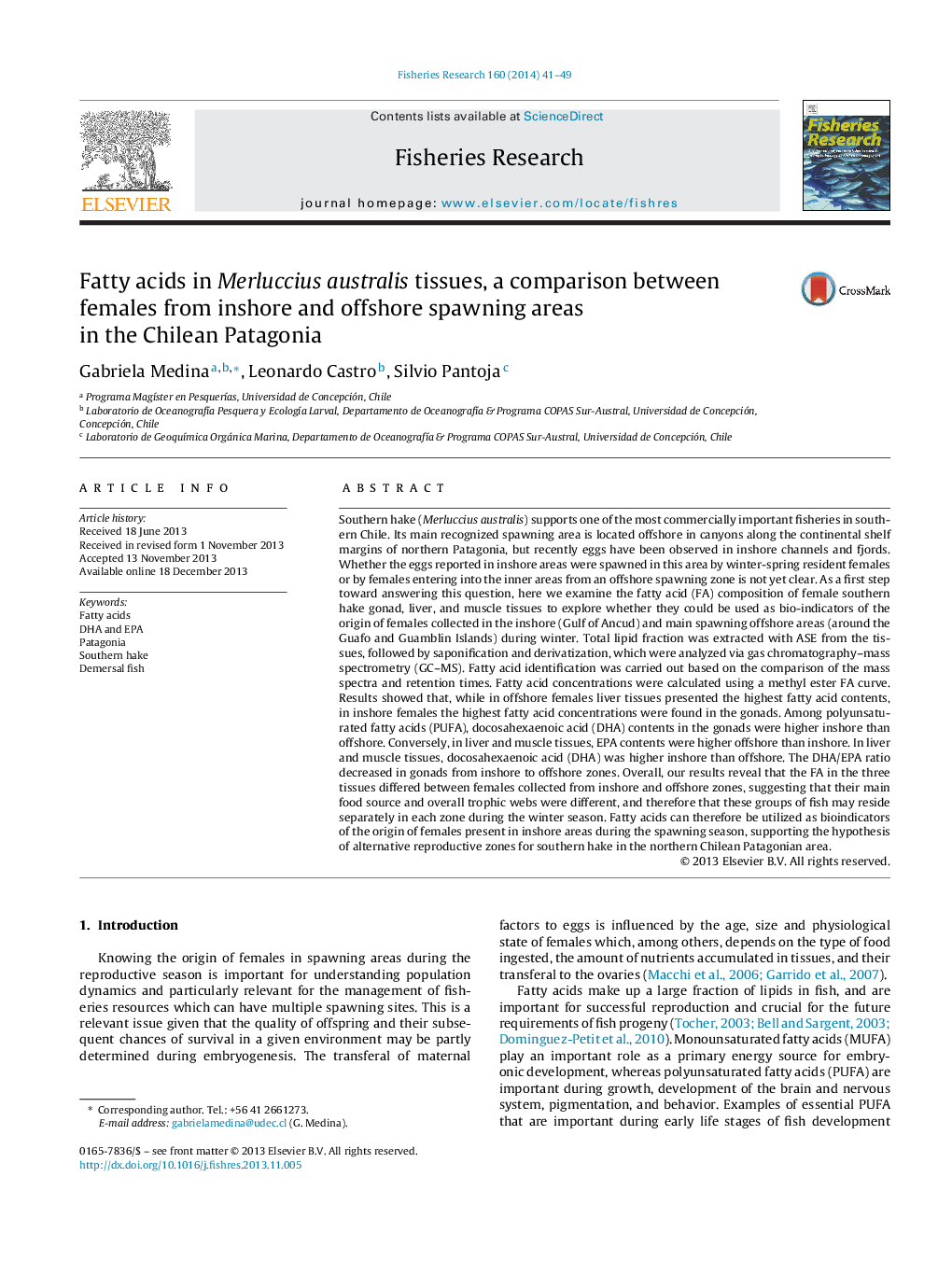| کد مقاله | کد نشریه | سال انتشار | مقاله انگلیسی | نسخه تمام متن |
|---|---|---|---|---|
| 4542870 | 1626808 | 2014 | 9 صفحه PDF | دانلود رایگان |

Southern hake (Merluccius australis) supports one of the most commercially important fisheries in southern Chile. Its main recognized spawning area is located offshore in canyons along the continental shelf margins of northern Patagonia, but recently eggs have been observed in inshore channels and fjords. Whether the eggs reported in inshore areas were spawned in this area by winter-spring resident females or by females entering into the inner areas from an offshore spawning zone is not yet clear. As a first step toward answering this question, here we examine the fatty acid (FA) composition of female southern hake gonad, liver, and muscle tissues to explore whether they could be used as bio-indicators of the origin of females collected in the inshore (Gulf of Ancud) and main spawning offshore areas (around the Guafo and Guamblin Islands) during winter. Total lipid fraction was extracted with ASE from the tissues, followed by saponification and derivatization, which were analyzed via gas chromatography–mass spectrometry (GC–MS). Fatty acid identification was carried out based on the comparison of the mass spectra and retention times. Fatty acid concentrations were calculated using a methyl ester FA curve. Results showed that, while in offshore females liver tissues presented the highest fatty acid contents, in inshore females the highest fatty acid concentrations were found in the gonads. Among polyunsaturated fatty acids (PUFA), docosahexaenoic acid (DHA) contents in the gonads were higher inshore than offshore. Conversely, in liver and muscle tissues, EPA contents were higher offshore than inshore. In liver and muscle tissues, docosahexaenoic acid (DHA) was higher inshore than offshore. The DHA/EPA ratio decreased in gonads from inshore to offshore zones. Overall, our results reveal that the FA in the three tissues differed between females collected from inshore and offshore zones, suggesting that their main food source and overall trophic webs were different, and therefore that these groups of fish may reside separately in each zone during the winter season. Fatty acids can therefore be utilized as bioindicators of the origin of females present in inshore areas during the spawning season, supporting the hypothesis of alternative reproductive zones for southern hake in the northern Chilean Patagonian area.
Journal: Fisheries Research - Volume 160, December 2014, Pages 41–49